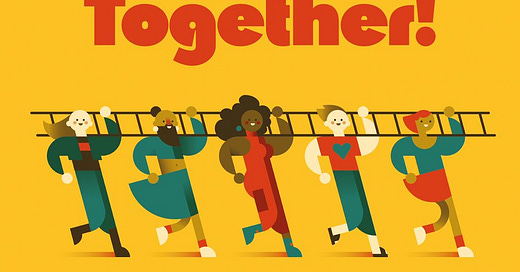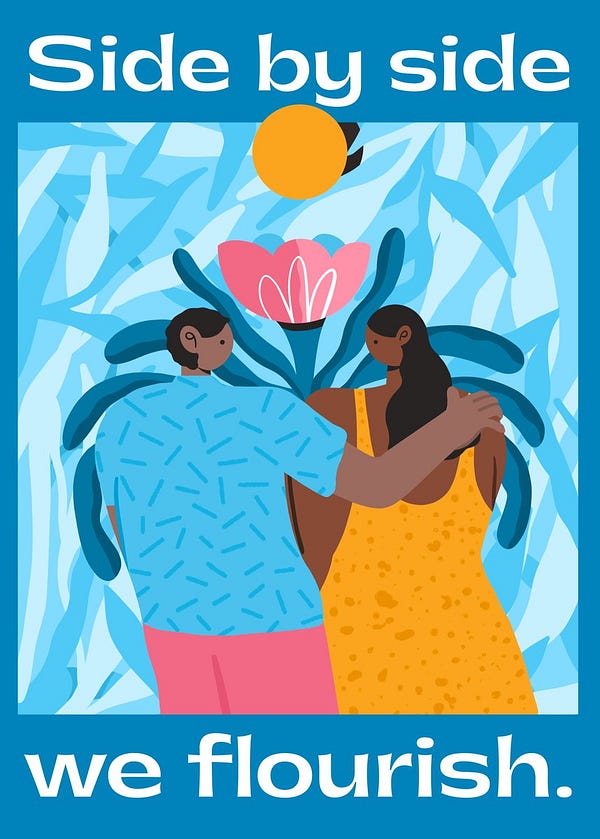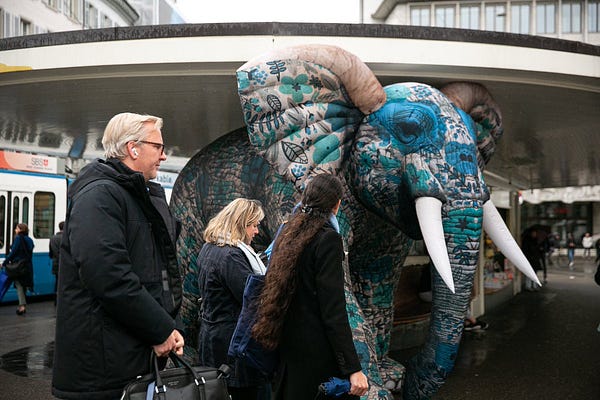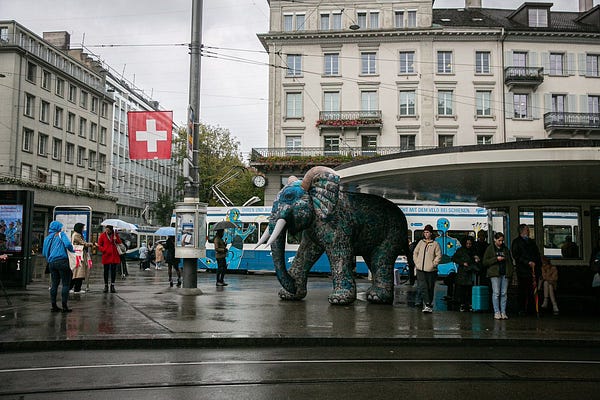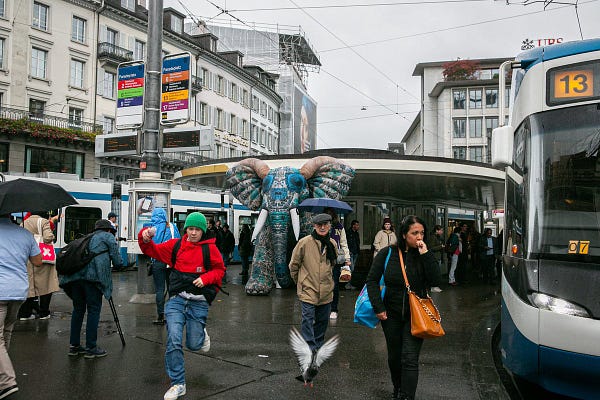Welcome to the second edition of the #hopebased substack. This week we are focusing on women’s rights, but we have already received requests to tackle climate change and messaging elections, so stay tuned for those.
We will start with an excerpt from a new article by Natika Kantaria, a comms strategist, human rights campaigner and Fulbright scholar. She shares simple, real-life stories of empowered women from Georgia, focusing on the importance of diversity. We then share some other recent work you can use for your women’s rights storytelling.
If someone has passed this on to you, you can sign up now for regular examples of narrative change and generally hope-based progressive activism from around the world.
A recipe for better communication of the rights of women and girls
A hope-based communications approach to women and girls’ rights can move the narrative beyond problems and challenges and focus on solutions and inspiration.
By Natika Kantaria.
When communicating about human rights, and specifically about the rights of women, many campaigns try to make us pity women by emphasizing their vulnerability. But they should do the opposite.
Now, as never before, it is time for us to hear more about the achievements and success stories of women who fought for their dreams and their rights, despite these challenges.
Here are two examples:
Nadya Benklyan, a woman pilot, is a rarity in her profession in patriarchal countries because of deeply rooted stereotypes about women’s abilities and roles.
Mari Gurgenishvili is the only sailor mechanic woman in the nation of Georgia, and her story is inspiring. She acts as a role model among her peers and encourages everyone to persist in the pursuit of their dreams.
These are true stories of underrepresented women that unite us and inspire hope for a more equitable society, despite many challenges. The videos above about these women are far from the promotional materials aiming to create pity for women; instead, they empower and build support.
In order to create effective hope-based campaigns that convey solutions, not just problems, I would like to offer my own recipe focused on:
unity,
creativity,
simplicity,
and intersectionality.
Read Natika’s article in full on OpenGlobalRights. You can also find more guidance on communicating women’s rights from another hope-based communicator, Camila Chaudron, here.
Guidance for visual communications around sexual and reproductive rights
Our hope-based friends over at Fine Acts have worked their magic again, this time launching a new collection of creative commons content in partnership with the International Planned Parenthood Foundation. The collection brings together artworks on topics like abortion care, contraceptive care & sex ed, gender-based violence, gender equalty & LGBTQI+ rights - all of which you can adapt and re-use for your women’s rights work.

These works are the result of interactive visual communications trainings for 50+ organizations, part of the IPPF network, from all around the world. The trainings inspired activists to think strategically about their visual communications and campaigning. The works can be used by activists to illustrate their messages, or to run a/b tests to refine and improve their messages.
Fine Acts already ran some tests of their own, here is what they found:
Representation: reflecting our target audience in our visuals is key to getting our message across. For example, men responded mainly to the visuals where they could see someone that looks like them represented in the image. So try to tailour your content to your target audience instead of using generic illustrations or stock photos (that’s why most of this content can be adapted under a creative commons licence!).
Diversify your visual vocabulary: don’t assume that your traditional visuals always work. In some countries, the classic protest pose imagery received more engagement, while in other countries, other less used types of imagery and symbols were more appreciated. The purpose of using illustration is to test different kinds of visual imagery that we have not tried before: who knows, maybe hearts will get more engagement than fists!
Inspire hope and awe: Don’t that simply reflect the direness of a situation, or ‘what it is’ – be more interested in what ‘it could be’. Aim at inspiration, excitement, bringing hope, activation, aspiration.
Craft effective slogans: make sure to align the copy you are using with your visual/illustration. The copy should not repeat, but should complement the illustration. Avoid using slogans that are too obvious, or include possible trigger words.
Read the full guide here. Read more about how Fine Acts teamed up with IPPF for the project here and their toolkit for the 16 Days of Activism here.
If you like this, you will also love Familias Ahora, a citizen platform from Bridges/Puentes promoting human rights friendly narratives on gender issues. If you want to take a quick action on narrative change right now, follow and share them on twitter or facebook right now. These initiatives show us how we can create and distribute content and stories that change narratives.


Other hopey, changey stuff
Activism stuff: Human Rights Watch produced a very #hopebased report last week showing how welcoming communities can help children seeking asylum to rebuild their lives. It’s a great example of solutions-based research that puts pressure on leaders to implement a practical, evidence-backed policy call. It’s really worth a scroll through Jo Becker’s twitter feed (@jobeckerhrw) to see the whole strategy play out.




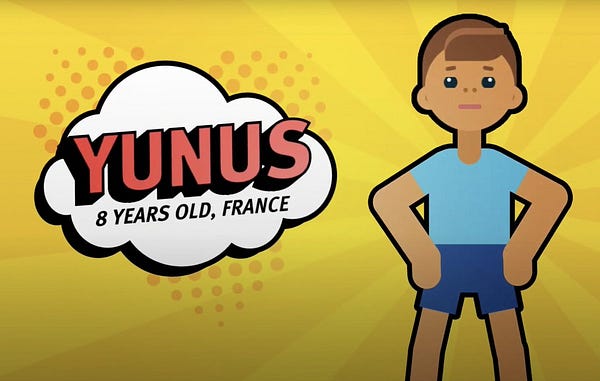
Politics stuff: Progressive win and hope-based messaging in local Victoria elections in Australia. Worth a share.
Changey stuff: Great news from Switzerland which just voted to adopt consent-based rape law - the latest win for campaigners pushing for implementation of the Istanbul Convention. For too long, debates on gender issues have been directed by conservatives trying to limit rights and freedoms such as abortion access. Instead of being on the defensive, we need to push hard for progressive laws. Shout-out to Amnesty International Switzerland and Operation Libero.
Operation Libero are a great case study for responding to populist narrative tactics. Instead of letting the far-right set the political agenda, they are taking the lead by putting the country’s relationship with the EU fron-and-centre with this eye-catching “europaphant in the room” campaign.
Culture/activism stuff: Some nice hopeamine in this interview between Bjork and Greta Thunberg (h/t to Krizna Gomez for sharing this). When asked about balancing optimism and pessimism, Bjork says:
I just released a track [“Atopos”, from her new album] where I repeat “Hope is a muscle, hope is a muscle”. It is something you need to work on, it doesn’t fall from the sky. As a mother of two children, it comes naturally for me to think in this way, because when you are bringing up kids, you have to have some sense of continuity – a place to head for in 20 years, 40 years, 60 years.
…I write about hope, but a lot of my songs start with some sort of conflict, and then in the middle of the track, you transform and figure out a way to deal with that issue. It’s not escapist; it’s trying to deal with real issues.To which Greta replies:
I completely agree that hope is something you need to work on. Hope is something you need to engage in; it is something you need to earn. It feels like people are obsessed today with asking “Is there hope?” – because they feel that without it, they cannot act. In fact, it’s the exact opposite: when they act, they create hope.
Many people dump that burden on children, expecting us to be the ones delivering that hope. And that’s not a fair thing to do, because we aren’t the ones who created this crisis – we are the ones who will suffer the consequences. They expect us to deliver them hope while not doing anything. I find that very, very absurd.
More on hope and climate change coming in future issues. In the meantime, Bjork’s new song is added to the hope-based playlist. More recommendations welcome.
As usual, please forward this on to someone it can inspire. Please don’t make us get on toxic twitter to promote it there instead ;)

